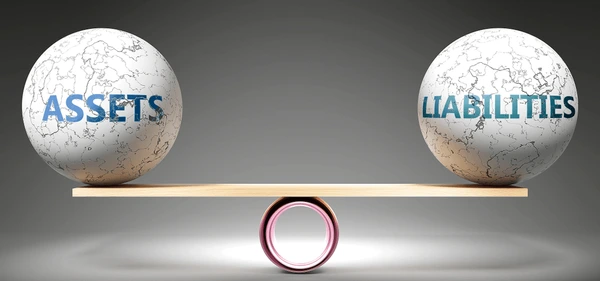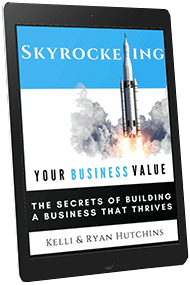
Identifying Assets and Liabilities for a Purchase Price Allocation
Purchase price allocation (PPA) is a useful tool if you are looking to buy a business or own a business with a PPA. This process involves calculating the value of each asset and liability of a target business. Obtaining a PPA valuation comes with many benefits. For example, knowing how a business’s value is distributed can help you make strategic decisions and effectively negotiate when buying a business or assessing employee stock options. When performing a PPA valuation, business appraisers must identify all assets and liabilities of a target business. In this article, we discuss the asset and liability identification process.
If you are seeking a PPA valuation, it is important to work with an experienced business appraiser. Peak Business Valuation is happy to help! As a professional business appraiser, Peak values thousands of businesses throughout the United States. This often includes performing purchase price allocation valuations. Peak can provide you with a PPA valuation and discuss any questions you may have on purchase price allocation. Start now by scheduling a free consultation with Peak Business Valuation below!
What is a PPA Valuation?
During a PPA valuation, business appraisers determine a business’s purchase price by valuing each of its assets and liabilities. To do so, valuation experts may use various valuation methods such as the market approach and/or the income approach. The market approach uses valuation multiples and compares similar businesses as part of the valuation process. In contrast, the income approach assesses a business’s risks and income potential. Business appraisers will determine which method is best during a PPA valuation. To learn more, see How to Value a Business.
The PPA valuation process ensures transparency and helps buyers understand what they are receiving in a business purchase. This promotes informed decision-making and helps buyers develop an effective negotiation strategy. In the following paragraphs, we highlight the asset and liability identification process. If you have any questions, schedule a free consultation with Peak Business Valuation!
The Purpose of Identifying Assets and Liabilities
Identifying assets and liabilities provides a clear understanding of what contributes to a business’s value. As such, business appraisers assess the target company’s balance sheet to identify tangible assets like property, equipment, and inventory. Then, they identify intangible assets such as patents, trademarks, and customer relationships. This process allows the buyer to see exactly what they are buying in a business and make decisions accordingly.
Classification of Assets and Liabilities
During a PPA valuation, business appraisers organize the identified assets and liabilities into distinct categories. Assets are separated into tangible and intangible categories. On the other hand, liabilities may be separated in various ways. They are often classified by their repayment schedule, such as current debts or long-term debts. This provides a structured view of the target company’s financial standing. With this information, buyers can assess the risks and opportunities associated with each asset and liability. See Reviewing a Purchase Price Allocation Report for more information.
Tangible Assets
Tangible assets are the physical properties and resources of a business. This can include real estate, machinery and equipment, inventory, etc… Business appraisers assess these assets to determine their fair market value. By valuing tangible assets, buyers gain insights into the operational potential and efficiency of the target company. This information helps buyers understand the tangible benefits they will gain from the acquisition. In addition, tangible asset valuation can help with planning for the future and enhancing operations.
As a business appraiser, Peak Business Valuation values thousands of businesses throughout the United States. We are happy to help you with a PPA valuation! In addition, Peak can provide a machinery and equipment appraisal whether you are buying, expanding, or selling a business. If you have any questions, schedule a free consultation with Peak Business Valuation today!
Intangible Assets
Intangible assets are the non-physical assets of a business. Common intangible assets include brand reputation, patents, and customer relationships. As part of a PPA valuation, business appraisers may use various approaches to value intangible assets. Understanding the value of intangible assets helps buyers understand a target business’s competitive advantages and growth potential. This allows buyers to determine how to leverage these assets to maximize the value of a business.
Liabilities
Next, identifying and assessing the liabilities of a business is a key component of purchase price allocation. Liabilities are the debts or obligations a business owes to third parties. This includes short or long-term loans, accrued expenses, notes payable, deferred revenue, etc… It is critical for buyers to understand the financial responsibilities of a target business. This allows them to manage financial risks and develop strategies to mitigate liabilities. For more information, check out Reasons to Obtain a Purchase Price Allocation Valuation.
Fair Value Measurement
By valuing the assets and liabilities of a business, valuation experts can provide a comprehensive fair value measurement. With an accurate fair value assessment, buyers discover the target company’s financial position. This information can help buyers make investment decisions, maximize tax benefits, and ensure compliance with accounting standards. In addition, understanding the fair market value of a business can help buyers negotiate a fair purchase price. Reach out to Peak Business Valuation for more guidance on PPA valuations!
Conclusion
Identifying and valuing a business’s assets and liabilities is crucial in purchase price allocation. This gives buyers a precise understanding of a business’s value. By receiving a PPA valuation, buyers can make informed decisions, optimize tax planning, improve financial reporting, etc… In addition, obtaining a PPA valuation can help you understand how to maximize the value of a business you are purchasing. For more information, see Understanding a Purchase Price Allocation Valuation. If you plan to receive a PPA valuation, it is important to work with an experienced business appraiser.
Peak Business Valuation, business appraiser, performs PPA valuations regularly. We are happy to provide you with a purchase price allocation valuation! Additionally, Peak Business Valuation can answer any questions you may have on purchase price allocation and valuing a business. Get started today by scheduling a free consultation with Peak Business Valuation below!
